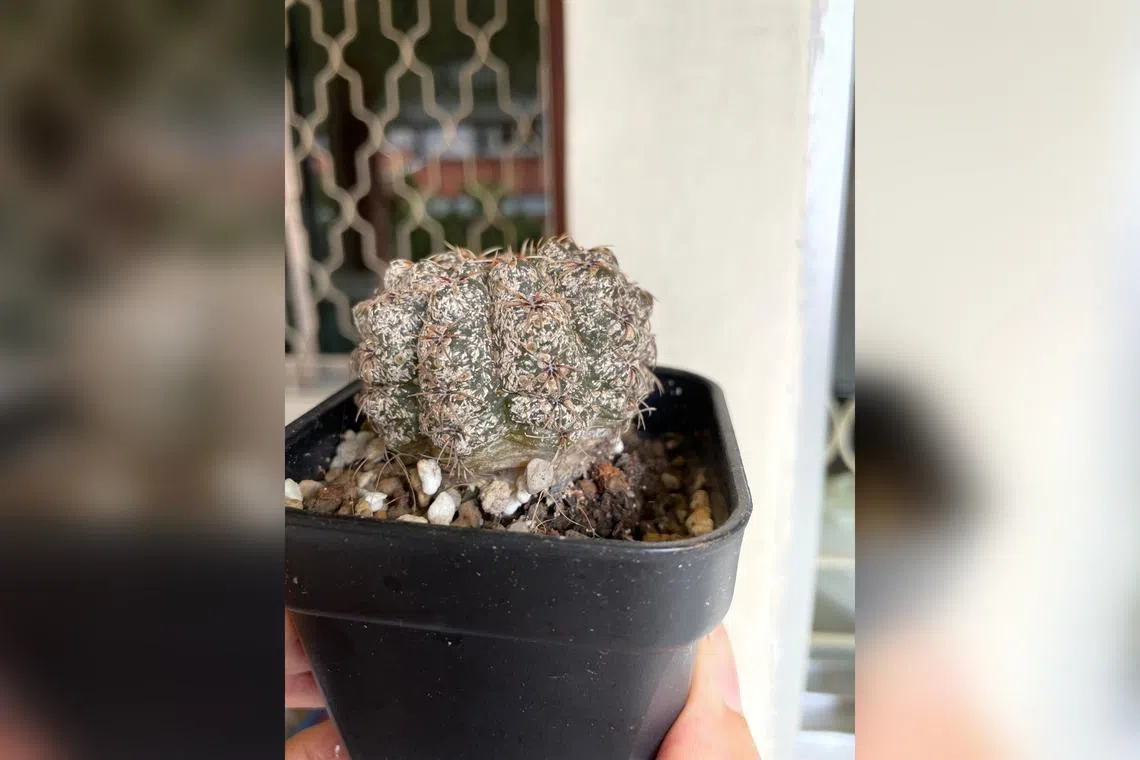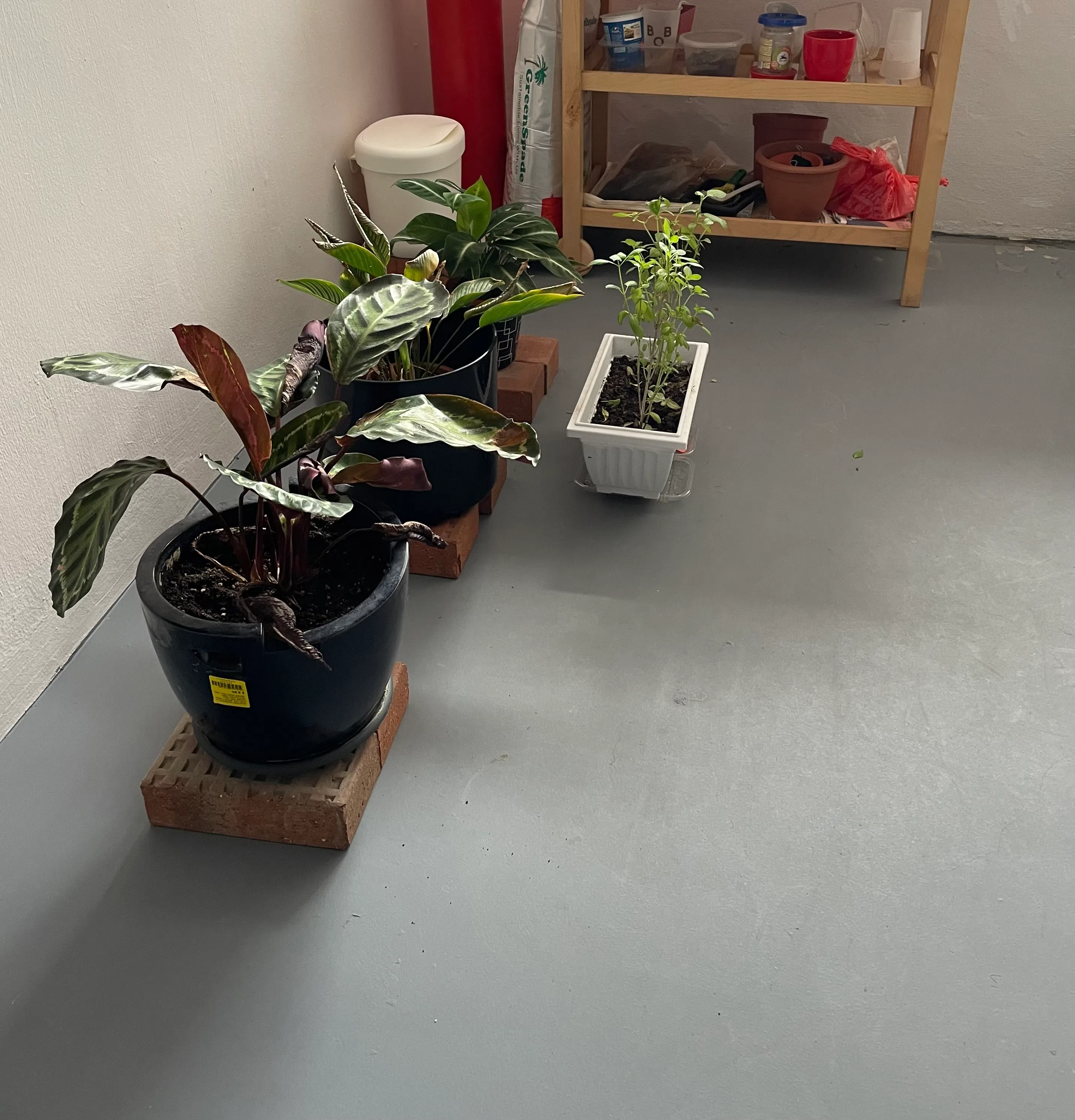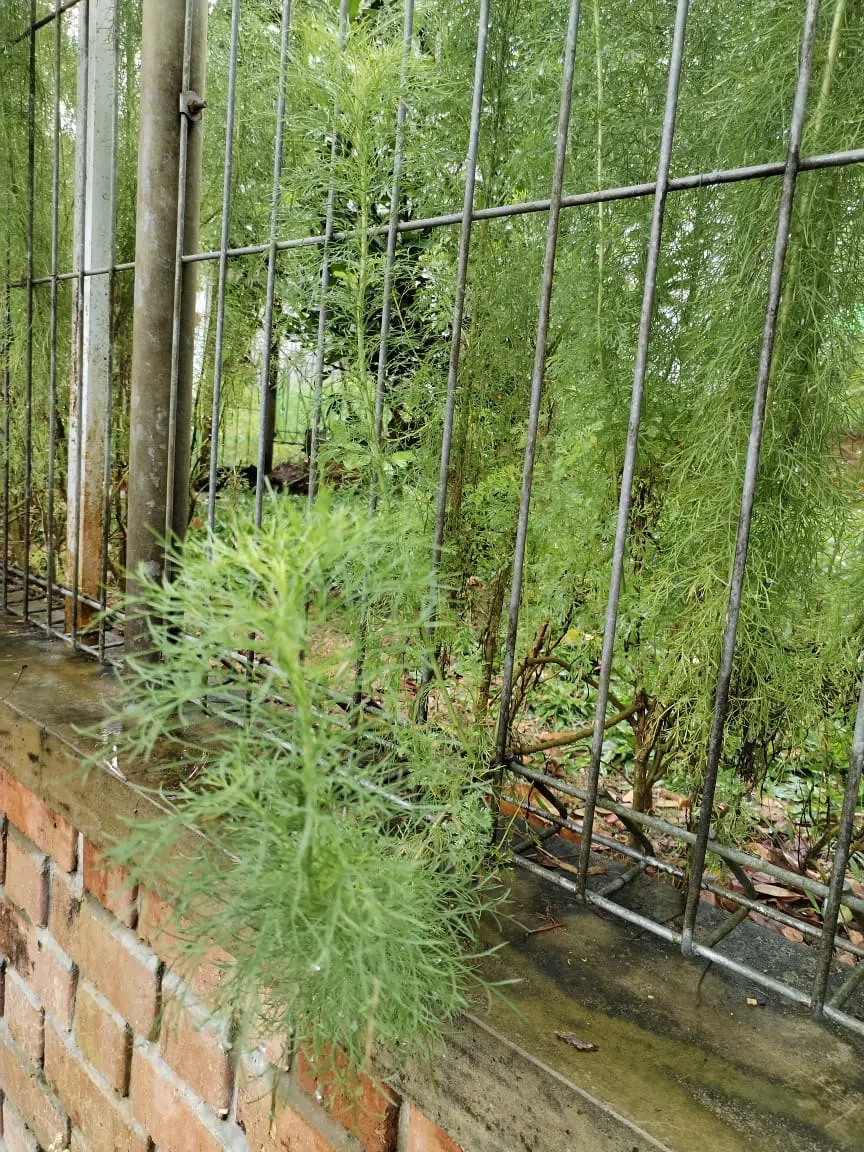Root Awakening: Cactus has scale infestation
Sign up now: Get ST's newsletters delivered to your inbox

This sick cactus may have been permanently scarred by pests' feeding habits.
PHOTO: EUG CHAN
Wilson Wong
Follow topic:
Remove cactus’ infestation with soft toothbrush
I have had this Gymnocalycium cactus since May 2022. When white spots started appearing, I treated them with neem oil and then with 75 per cent alcohol spray, but the spots seem to have overwhelmed the plant. I water the cactus once a week, and keep it away from rain and direct sunlight. What is wrong?
Eug Chan
Your cactus appears to have a scale infestation. First, try to remove the pests by using a soft toothbrush, but do note that their feeding habits may have permanently scarred your plant.
The contact pesticides you used work by suffocating existing pests. For a more lasting effect, use a systemic pesticide such as dinotefuran granules, which are applied around the root zone.
Once the granules dissolve, the pesticide within them is taken up by the plant, enters the sap and kills pests that feed on the plant. Replenish the granules according to the manufacturer’s recommendation.
Calathea plants need humid environment; may be sensitive to salts in tap water

Calathea species need to be grown among other plants that create a humid microclimate.
PHOTO: KARL NG
The leaves of my Calathea plants seem to be drying up. The plants are in a corridor which gets only indirect sunlight. I water them on alternate days and make sure the soil is not too damp before doing so. What is wrong?
Karl Ng
Calathea plants are difficult to grow in high-rise environments. They do not thrive individually and need to be grown among other plants that create a humid microclimate. Strong winds and low humidity dry the plants out, which can give the leaves a rolled-up appearance.
Parts of the leaves appear burnt. This is because plants can be sensitive to dissolved fluoride in tap water or build-up from chemical fertilisers. Try flushing out the growing media and use rain water to irrigate your plants instead. Reduce the frequency and amount of chemical fertiliser you are applying, or use slow-release organic fertiliser pellets.
Tall plant is a citrus species

From its growth habit and the shape of its leaves, this tall plant looks to be a citrus species.
PHOTO: TEO TEE HONG
This plant is about a year old. I thought it was a small lime tree due to the shape of the leaves and their smell, but it has grown more than 3m tall. What tree is this and when will it bear fruit?
Teo Tee Hong
From its growth habit and the shape of its leaves, this plant appears to be a citrus species.
Check if the new growth is coming from the rootstock – the part below the graft union and above the base of the substrate – of a grafted citrus plant. If so, prune it to avoid affecting the grafted plant’s growth.
Further characteristics cannot be ascertained without knowing the specific cultivar or species.
Plant is not dill

The dogfennel, which is toxic, is often mistaken for dill.
PHOTO: CHEAH CHEW PING
My friend’s dill plant (pictured) has grown quite tall. The ones I grow from seed packets rarely reach such heights. Are there local varieties of the dill plant?
Cheah Chew Ping
The plant shown is not dill (botanical name: Anethum graveolens), but an unrelated plant called the dogfennel (botanical name: Eupatorium capillifolium). It is reported to contain compounds which are toxic to the liver, so avoid using it in food.
Guiana Chestnut may be suffering from collar rot

This Guiana Chestnut may have been planted too deeply, overwatered or damaged during repotting.
PHOTO: NG KOK MENG
I bought this plant at the start of 2023 and have been watering it daily. About a fortnight ago, I noticed a portion of the lower trunk near the soil appeared rotten. The inner trunk beneath the bark is soft and pulpy. Is this due to infection or overwatering? The leaves are healthy and the plant gets direct sunlight from the window.
Ng Kok Meng
Your Guiana Chestnut (botanical name: Pachira aquatica) is likely suffering from a disease that has affected the collar of the plant. There are several possible causes of the disease.
First, the plant may have been planted too deeply. If the base of the plant is buried beneath substrate, the moisture surrounding the stem could have caused the collar to rot.
Check if this is the case by removing the substrate down to the base of the plant. Clean out the rotten part of the plant and keep the area dry.
Other possible reasons for the disease are overwatering, which creates a root zone that is moist for prolonged periods, or mechanical damage – incurred during repotting, for example – that injured the plant and left it vulnerable to microbial infection.
Answers by Dr Wilson Wong, an NParks-certified practising horticulturist, parks manager and ISA-certified arborist. He is the founder of Green Culture Singapore and an adjunct assistant professor (Food Science & Technology) at the National University of Singapore.
Have a gardening query? E-mail it with clear, high-resolution pictures of at least 1MB, if any, and your full name to . We reserve the right to edit and reject questions.

